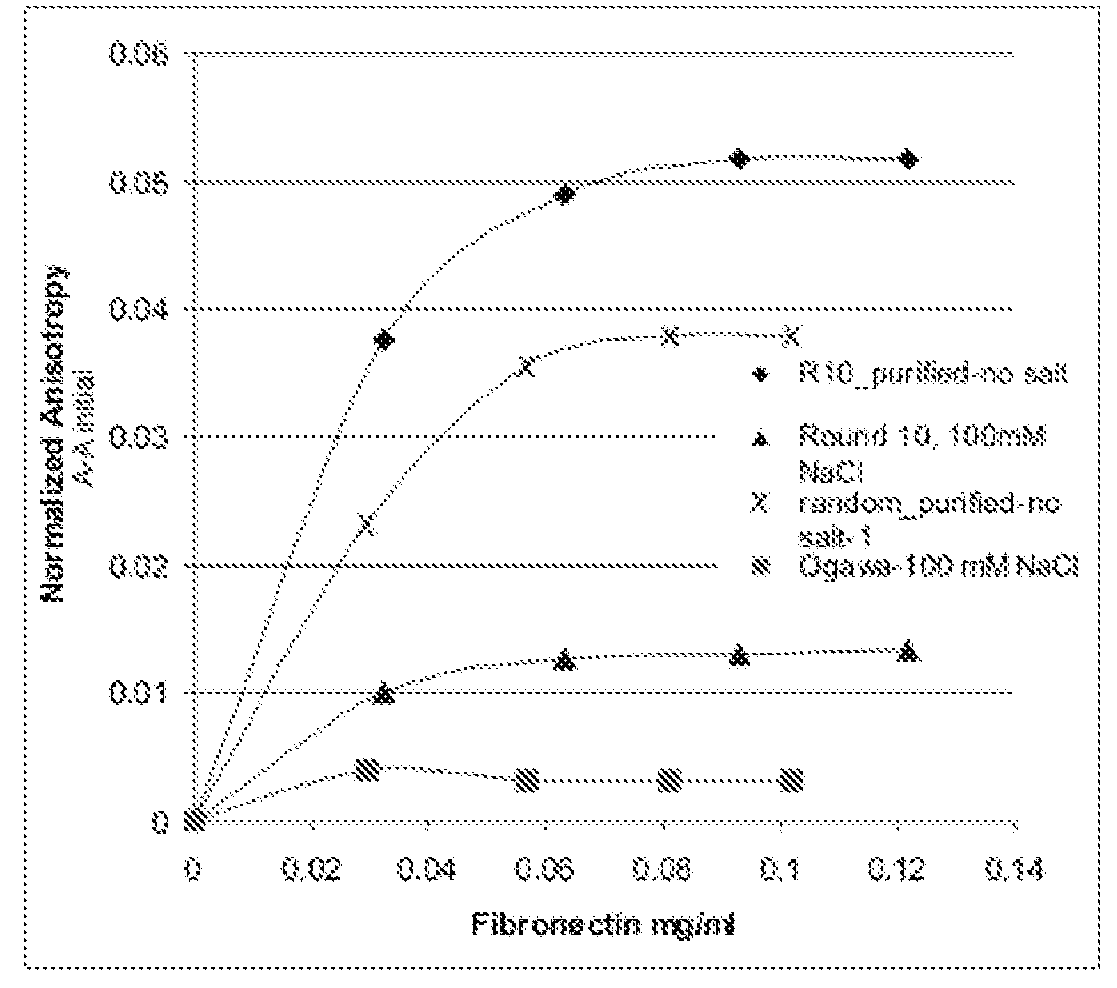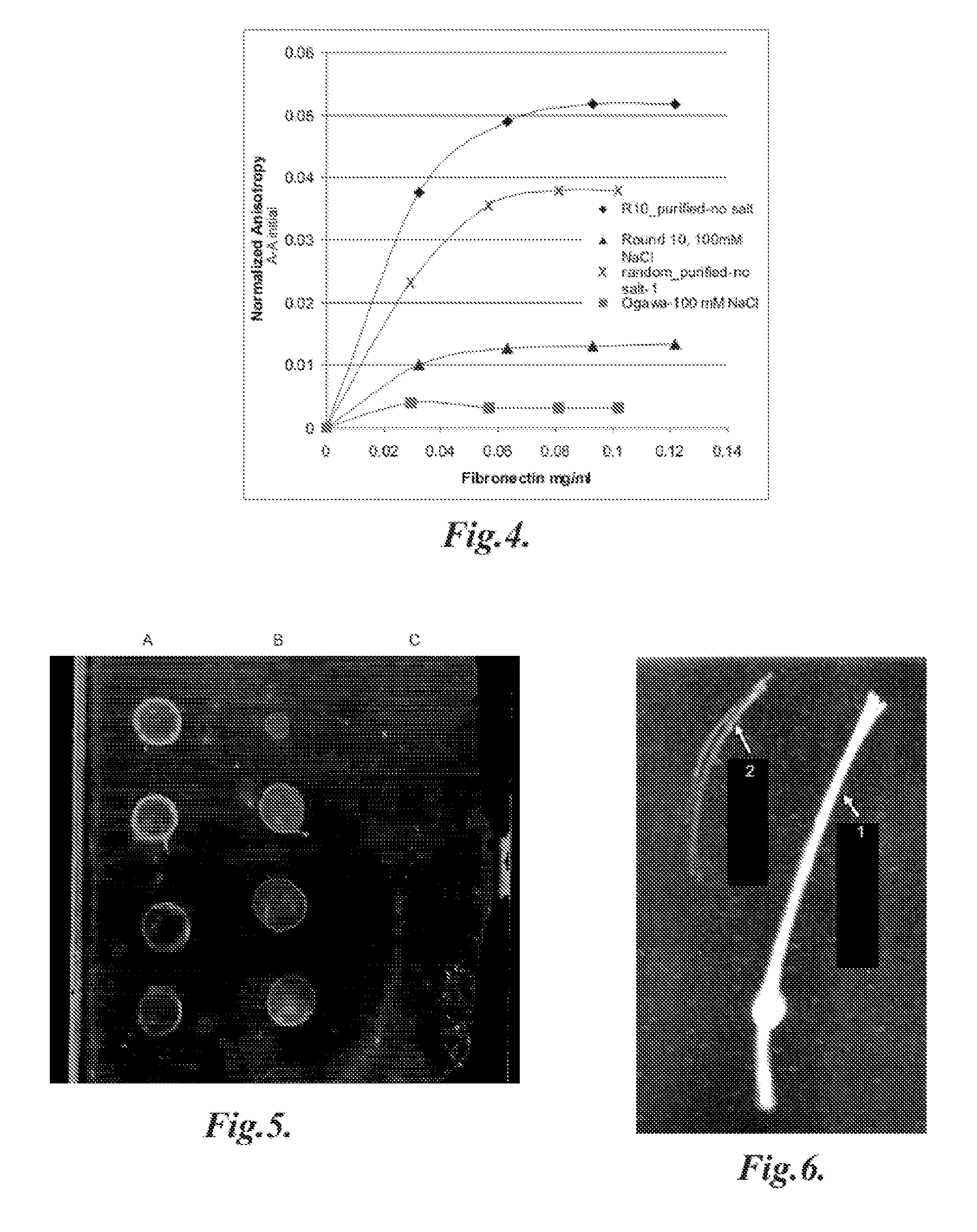Methods and devices for enhanced biocompatibility
a biocompatibility and biocompatibility technology, applied in the field of enhanced biocompatibility devices, can solve the problems of reducing the efficiency of the implant, and reducing the immune response, so as to promote the biocompatibility of the device, promote cell adhesion and cell growth, and reduce the immune response
- Summary
- Abstract
- Description
- Claims
- Application Information
AI Technical Summary
Benefits of technology
Problems solved by technology
Method used
Image
Examples
example 1
[0049]A predominant ECM protein, fibronectin, was chosen as a model target for development of novel DNA aptamers. A SELEX protocol, in which all that is required is a method for facile partitioning of the bound nucleic acids from the free or weakly binding species, was utilized to generate aptamers. Between multiple rounds of such partitioning, polymerase chain reaction (PCR) amplification of the binding fraction was performed to produce the desired enrichment. A target protein was passively adsorbed to 0.3 μm polystyrene beads. To develop fibronectin aptamers, the initial aptamer pool consisted of approximately 1015 randomized nucleic acid sequences of 35 nucleotides flanked by constant regions for PCR priming (e.g. 5′-ForwardPrimer-N35-ReversePrimerNot-3′). Asymmetric PCR was then performed using a 100-fold excess of forward to reverse primer. This results in a largely single-stranded DNA pool for the next round of binding. Prior to multiple rounds of SELEX, the initial library wa...
example 2
[0053]In order to demonstrate immobilizing aptamers on a device, a cellulose membrane was modified with an aptamer that was functionalized with 5′-amino groups and conjugated to the membrane (thickness 20 microns, diameter 210 microns) made of regenerated cellulose through divinyl sulfone conjugation chemistry. After immobilization, the presence of the aptamer on the sensor membrane surface was verified by reaction with a DNA specific dye (SYBR gold, Invitrogen), as shown in FIG. 6. The difference in fluorescence between an aptamer-coated membrane 1 and a control unmodified membrane 2 also bathed in SYBR gold is clearly evident as shown.
PUM
| Property | Measurement | Unit |
|---|---|---|
| Composition | aaaaa | aaaaa |
| Biological properties | aaaaa | aaaaa |
| Biocompatibility | aaaaa | aaaaa |
Abstract
Description
Claims
Application Information
 Login to View More
Login to View More - R&D
- Intellectual Property
- Life Sciences
- Materials
- Tech Scout
- Unparalleled Data Quality
- Higher Quality Content
- 60% Fewer Hallucinations
Browse by: Latest US Patents, China's latest patents, Technical Efficacy Thesaurus, Application Domain, Technology Topic, Popular Technical Reports.
© 2025 PatSnap. All rights reserved.Legal|Privacy policy|Modern Slavery Act Transparency Statement|Sitemap|About US| Contact US: help@patsnap.com



